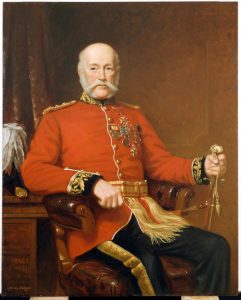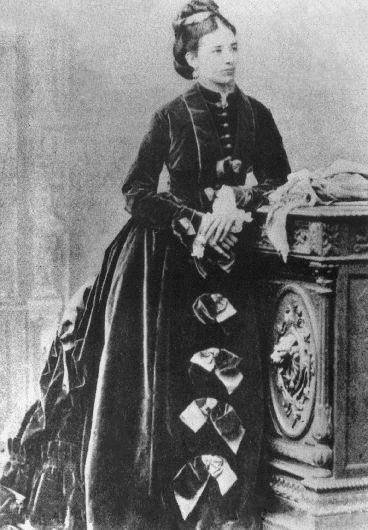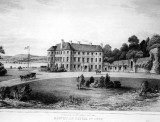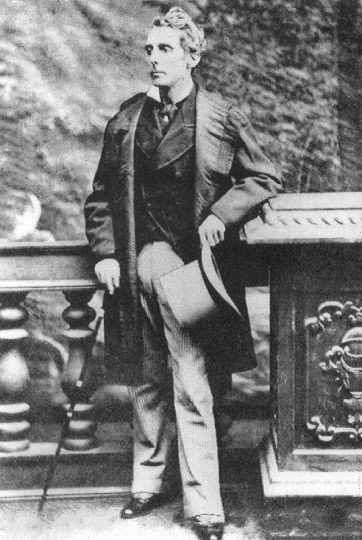
Sir Joseph Thackwell GCB KH (1 February 1781 – 9 April 1859) enters the story because he bought Aghada Hall in 1853, when it was sold following the death of James Joseph Roche, and the O’Brien v. Roche court cases in 1849.
Joseph Thackwell was born on 1 February 1781 at Rye Court, in Worcestershire. He was the fourth son of John Thackwell and Judith Duffy. The Thackwells had been landed gentry in Gloucestershire, and Worcestershire since at least the middle of the C17th. John Thackwell, JP, “of Rye Court,Moreton Court, and Birtsmorton Court in Worcestershire”, Joseph’s father died 1808. Nash, writing towards the end of the 18th century, remarked that ‘the Thackwells have now a good estate in this parish.’ The parish being Berrow in Worstershire.

He was commissioned as a Cornet in the Worcester Fencible Cavalry in 1798, was promoted to lieutenant in September 1799, and served in Ireland until the regiment was disbanded in 1800. He joined the 15th Light Dragoons, becoming a Captain in 1807. He served with the 15th Hussars in the Peninsular War at the Battle of Sahagún in 1808 and the Battle of Vitoria in 1813, and he lost his left arm at the Battle of Waterloo in 1815. He was promoted to a major at Waterloo, and made a brevet (honorary) lieutenant-colonel in 1817.
The 15th Hussars were at the Peterloo massacre in Manchester in 1817. So he may well have been at Peterloo. According to the Manchester Observer, “one officer of the 15th Hussars was heard trying to restrain the, by now out of control, Manchester and Salford Yeomanry, who were cutting at every one they could reach” calling out “For shame! For shame! Gentlemen: forbear, forbear! The people cannot get away!” It’s probably too much to hope he was the officer “trying to restrain the out of control Manchester and Salford Yeomanry”, but it is at least possible. He was almost as senior as Lieutenant Colonel Guy L’Estrange [the commanding officer on the day] , but, as a brevet (honorary) lieutenant-colonel, didn’t out-rank him on the 16th August.
The regiment had been split up in 1817, and occupied various country quarters until it was reformed in 1821. So he may not have been there, it is certainly not mentioned in “The Military Memoirs of Lieut-General Sir Joseph Thackwell” published in 1908, which has quite an extensive about riots in Nottingham in 1831, where the 15th Hussars were supporting the civil power.
He could have been at Peterloo, or perhaps not, either way, a year after the massacre, he was in command of the regiment for the following twelve years, up to 1832.
Joseph Thackwell was very much a career soldier, with brief pauses, he served almost fifty seven years in the Army. It’s quite a thought that almost forty years of that service was with only one arm. He was made Lieutenant-Colonel of the 15th Light Hussars on 15 June 1820, and commanded the regiment from 1820 to 1832. He then served in India, commanding the cavalry in the First Anglo-Afghan War of 1838–89, and at the Battle of Sobraon in the First Anglo-Sikh War of 1845–46, and at the Battle of Chillianwala and Battle of Gujrat in the Second Anglo-Sikh War of 1848-9. He also commanded the 3rd The King’s Own Dragoons, was colonel of the 16th Lancers, and was appointed Inspector-General of Cavalry, replacing HRH the Duke of Cambridge (1819-1904).
His final promotion was to Lieutenant General on 20th June 1854, aged 73, as part of the Inspector-General of Cavalry appointment, although he had been seeking a cavalry command in the Crimean War. The appointment lasted less than a year, and he was replaced as Inspector-General on the 1st February 1855 by Major-General Lord Cardigan, fresh from the Crimea, and the debacle of the Charge of the Light Brigade. Cardigan’s appointment was political, and a reward for what was initially regarded as heroic behaviour, and poor old Sir Joe was the rather un-thanked casualty of Cardigan’s reward.

Sir Joe was offered the Lieutenant-Governorship of the Royal Hospital at Chelsea, but declined it, and finally retired to Aghada for the remaining three years of his life.
He had married Maria Audriah Roche, eldest daughter of Francis Roche of Rochemount, County Cork, who was a great uncle of Edmond Roche, 1st Baron Fermoy, on 29 July 1825. Joseph was forty-four years old, she was nineteen. Maria Thackwell was, therefore, a first cousin, five-times removed of Diana, Princess of Wales. Sir Joseph bought Cherrymount House, at Templemichael, co. Waterford, in 1852, and Aghada Hall in co. Cork, the following year 1853. He died in Ireland on the 9th April 1859, aged 77, probably at Aghada Hall, and was buried on 14 April 1859 at Corkbeg cemetery, co. Cork, and Maria, who survived him by fifteen years, was buried there in June 1874. She was 68.
Joe and Maria had four sons and three daughters.
- Edward Joseph Thackwell b. 1827, d. 1903
- Major-General William de Wilton Roche Thackwell (1834–1910)
- Osbert Dabitôt Thackwell (1837–1858), unmarried aged twenty one.
- Francis John Roche Thackwell, ( ????-1869) unmarried ?
- Elizabeth Cranbourne Thackwell
- Annie Esther Thackwell m. Rev T.P.Little vicar of The Edge, Gloucs. d.1902
- Maria Roche Thackwell m. Lieut-Col James Bennett
He was invested as a Knight, Order of Hanover (K.H.) in 1834, well technically admitted to the Third Class of the Hanoverian Guelphic Order, on his retirement from the 15th Hussars. He was made a Companion of the Order of the Bath (C.B.) in July 1837, a month after Queen Victoria’s accession to the throne, as part of his promotion to a Major-General in India, and then finally, on his retirement, made a Knight Grand Cross of the Most Honourable Military Order of the Bath (G.C.B.) in 1849, on the recommendation of the Duke of Wellington. To quote from his memoirs.
‘On the 17th May the Duke of Wellington wrote to Sir Joseph Thackwell acquainting him that- “The Secretary of State has, upon my recommendation, submitted to the Queen your appointment to be a Knight Grand Cross of the Most Honourable Military Order of the Bath, of which Her Majesty has been graciously pleased to approve.” In reply Sir Joseph said- “To be promoted to the highest military honour is most flattering to the pride of an old soldier, and to have been recommended to Her Most Gracious Majesty’s favour by your Grace, under whose guiding wand I served some campaigns, is a matter of congratulation of which I may well be proud”.’
His four sons became officers in the British Army, though in Edward Joseph’s case, it was only briefly before he was called to the Bar. His second son, Major-General William de Wilton Roche Thackwell (1834–1910), served in the Crimean War and in Egypt in 1882. His third son, Osbert Dabitôt Thackwell (1837–1858), was lieutenant in the 15th Bengal Native Infantry. He was killed in the street in Lucknow,by some of the sepoys on 20 March 1858, following its siege, and capture. Final day of fighting before its recapture. He was twenty-one years old. His fourth son, Francis John Roche Thackwell, served in the Royal Irish Lancers, and died in India in 1869 from wounds inflicted by a tiger.

His nephew Joseph Edwin Thackwell, CB (1813-1900) also served in the British Army, serving as Aide-de-Camp to his uncle when commanding the Meerut Division in India in 1852–53; he also served in the Crimean War, and also became a lieutenant general. His brother-in-law, Edmund Roche 3rd Hussars, also served as his Aide-de-Camp, and also became a general. Edmund Roche’s only daughter Caroline Matilda Georgiana Roche [Sir Joe’s niece] married Sir Joe’s grandson Lt.-Col. Joseph Edward Lucas Thackwell.
It is not entirely clear yet whether the girls had children, but the eldest two sons definitely did; Edward Joseph Thackwell (1827-1903) had four sons, and a daughter, and Major-General William de Wilton Roche Thackwell (1834–1910) had one son, and two, probably three daughters.
All of Edward Joseph Thackwell’s sons also had army careers, and most of his grandsons served in the army, if only relatively briefly. The one standout Thackwell son who didn’t serve in the army unlike his father, grandfather, uncles, and cousins is William W. R. Thackwell’s son, Edward Francis Thackwell (1868 -1935) who had married Kitty Pope-Hennessey in 1894. Is he the black sheep of that generation?


